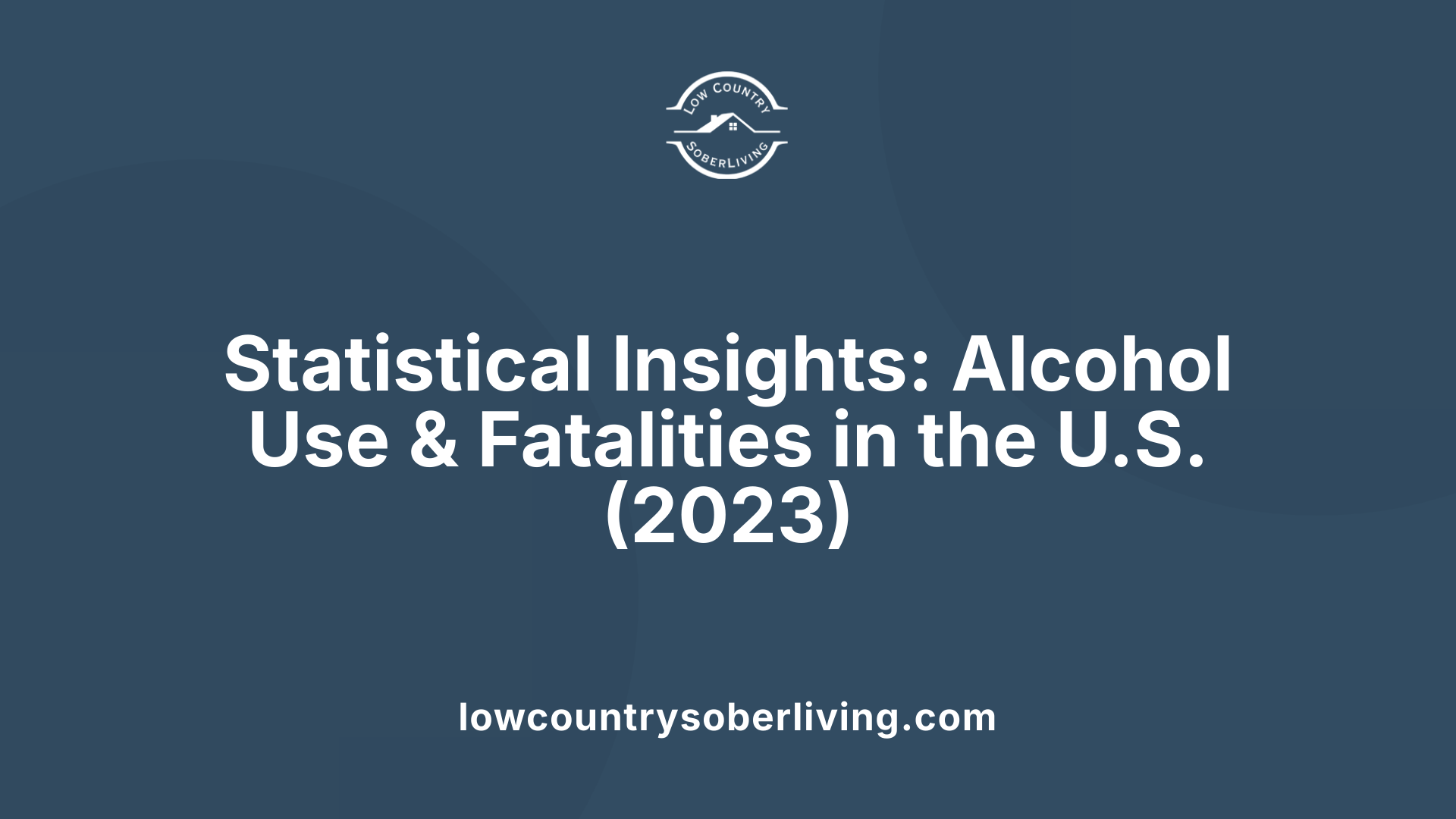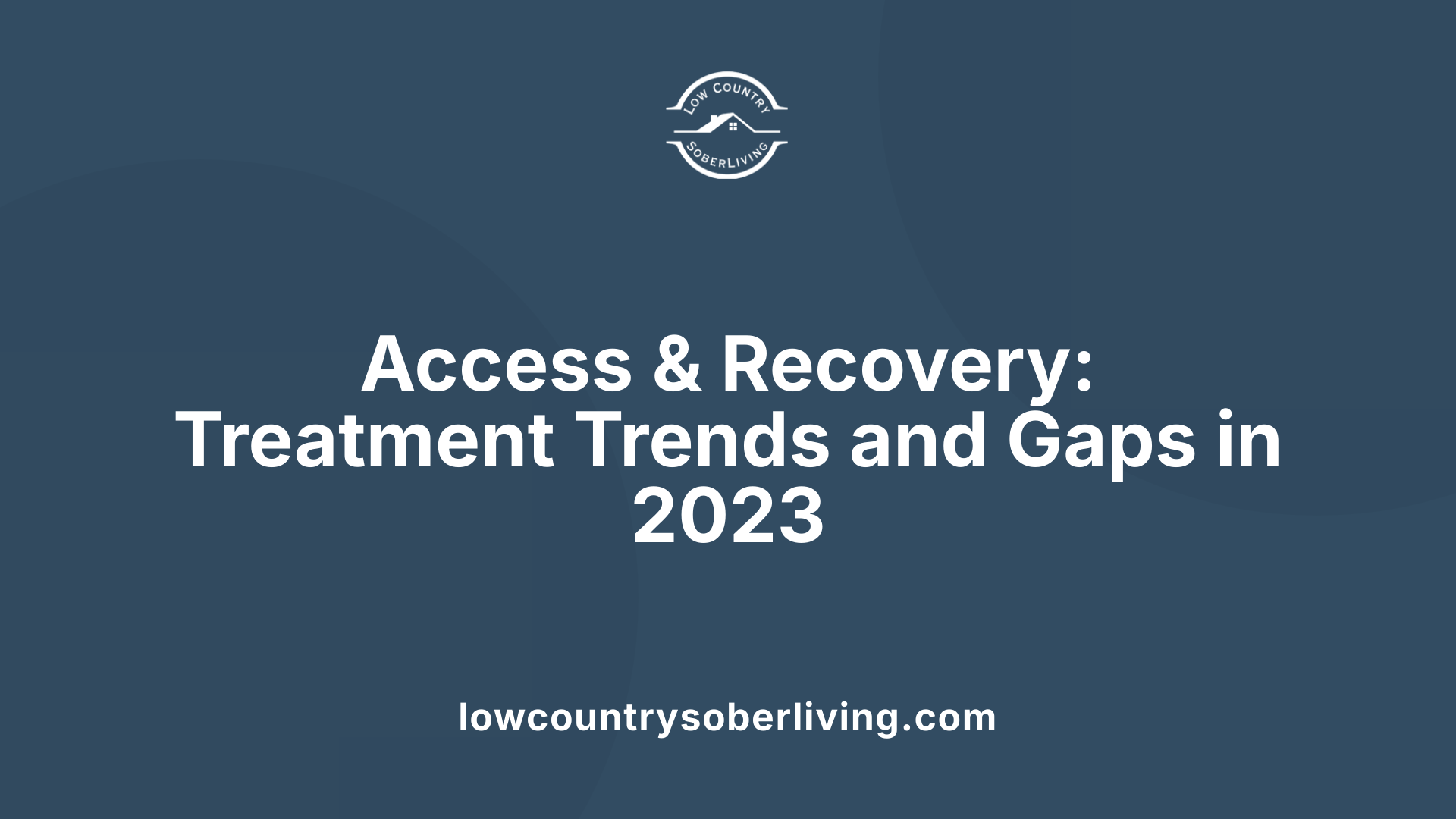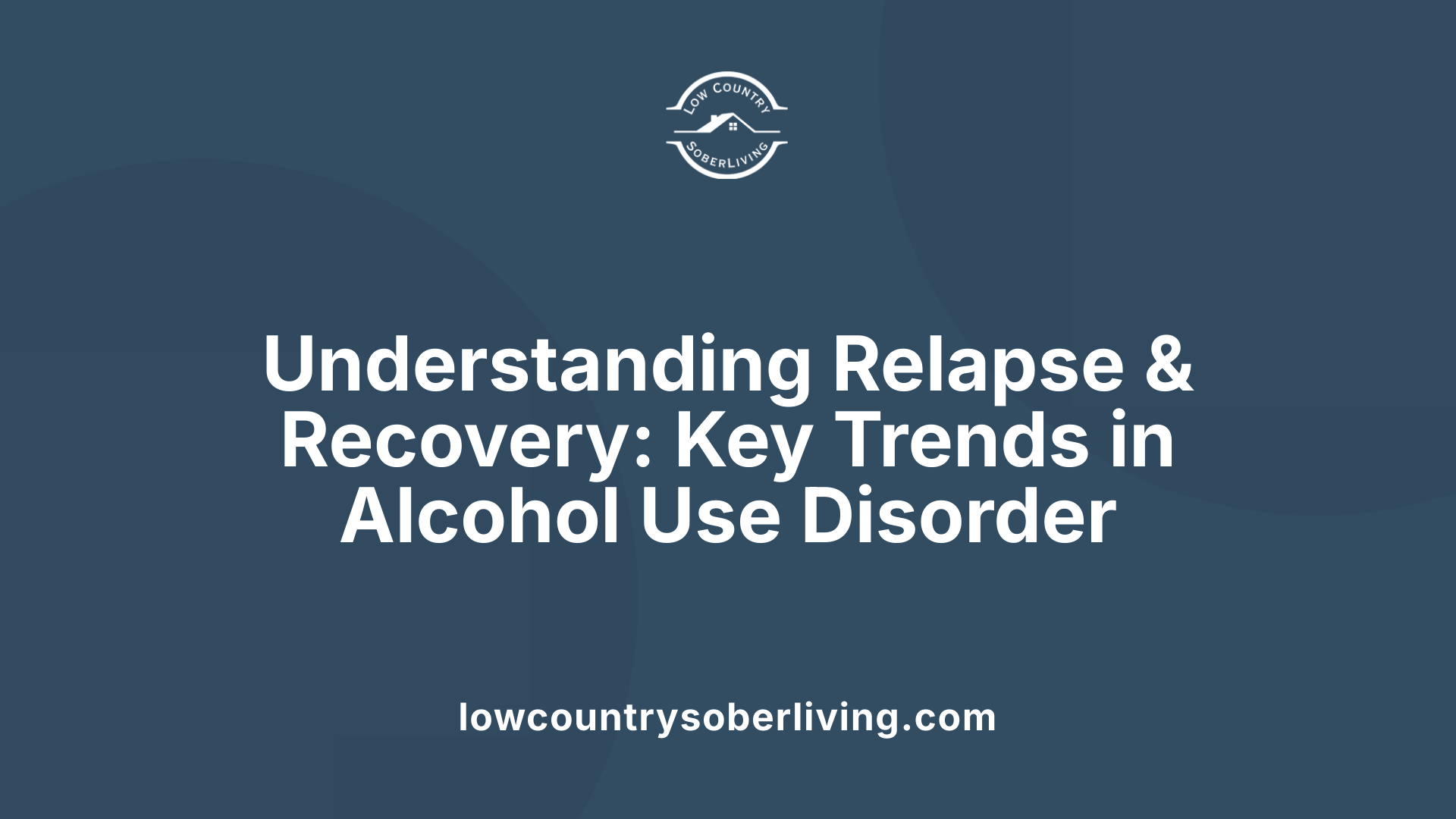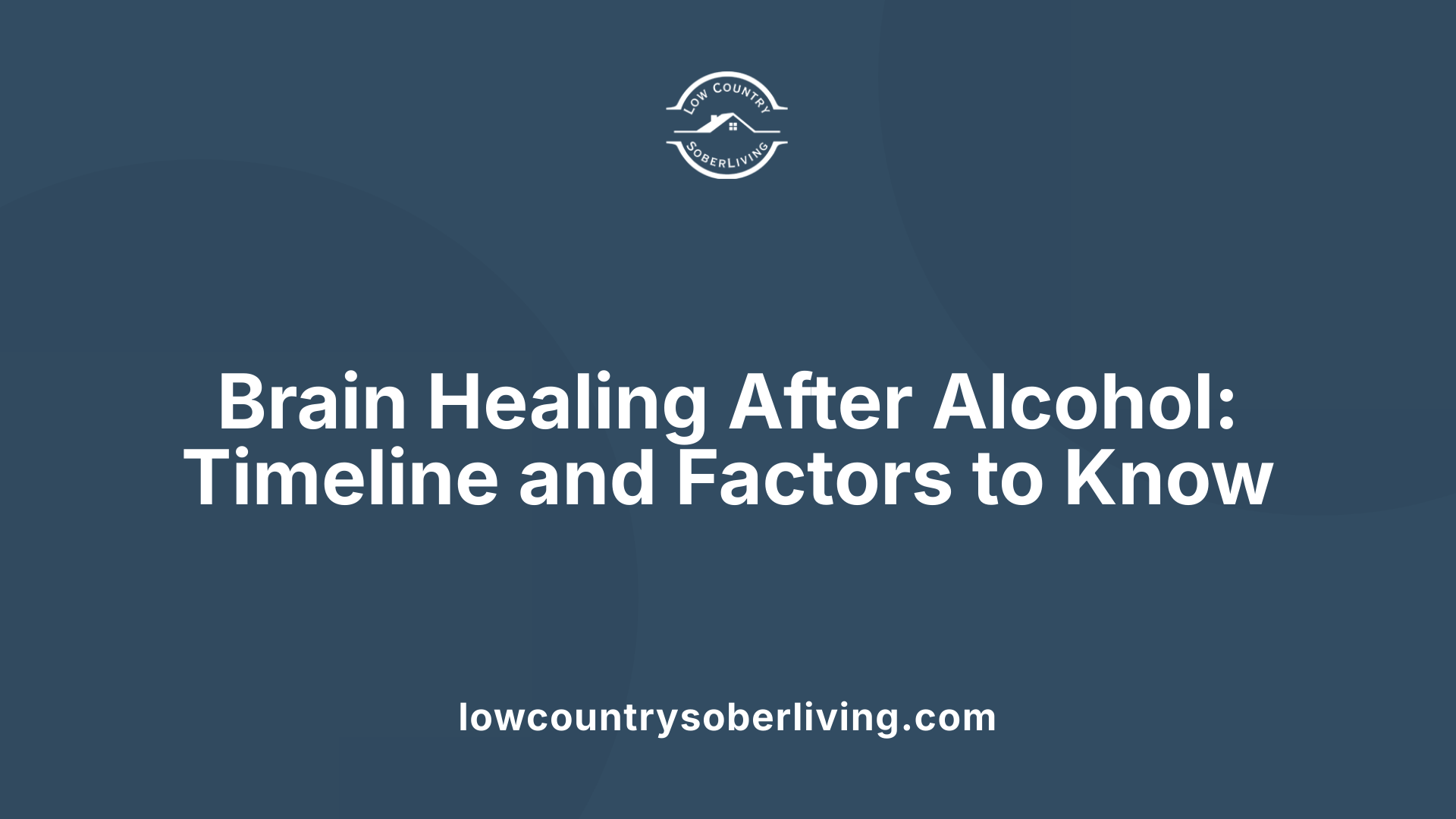Examining the Scope of Alcohol Use and Recovery in the U.S.
Alcohol use remains a significant public health challenge in the United States. Despite the availability of treatments and recovery programs, many individuals continue to face the struggles of alcohol addiction, relapse, and its profound health and societal impacts. This article explores critical statistics on alcohol consumption, recovery rates, treatment success, and the ongoing challenges in addressing alcohol use disorder (AUD).
Prevalence of Alcohol Use and Related Fatalities in the U.S.

What are some statistics related to alcohol use?
Alcohol consumption and its consequences remain a major public health concern in the United States. In 2023, more than 88 million Americans aged 12 and older battled a substance use disorder, including alcohol use disorder (AUD). Despite this high prevalence, treatment access remains limited, with only about 7.9% of those with AUD receiving treatment in the past year.
Fatalities associated with alcohol are alarmingly high. Annually, approximately 88,000 Americans die from alcohol-related causes. This includes about 10,000 deaths from alcohol-impaired driving in 2018 alone, accounting for nearly 30% of all traffic-related fatalities. The impact extends to chronic health issues, with alcohol contributing to over 200 diseases, including liver cirrhosis, cancers, and cardiovascular conditions.
In terms of demographics, alcohol use affects various groups differently. Men are three times more likely to die from alcohol-related causes compared to women, with over 69% of alcohol-related deaths involving males. Adults over 35 have the highest mortality rates, but alcohol-related deaths also significantly impact young adults. Teenagers face not just the health risks but also the tragic reality of about 4,700 deaths annually linked to alcohol, often due to accidents or suicides.
Heavy drinking remains prevalent, especially among certain occupational groups and regions. Studies show that binge drinking affects over 65 million adults, with 40% of current alcohol users engaging in heavy episodic drinking. Certain states, particularly in the Midwest and South, report higher rates of alcohol-related deaths, with New Mexico showing the highest per capita death rate.
Overall, alcohol continues to cause profound health, social, and economic burdens. The total annual cost of alcohol misuse in the U.S. has been estimated to exceed $249 billion, underscoring the urgent need for more effective prevention and treatment strategies.
Treatment Rates and Accessibility for AUD
 In 2023, efforts to treat alcohol use disorder (AUD) reached around 2.3 million Americans aged 12 and older, representing 7.9% of those with AUD in this age group. This indicates that a significant majority—over 92%—did not receive treatment within the past year, highlighting ongoing barriers to access.
In 2023, efforts to treat alcohol use disorder (AUD) reached around 2.3 million Americans aged 12 and older, representing 7.9% of those with AUD in this age group. This indicates that a significant majority—over 92%—did not receive treatment within the past year, highlighting ongoing barriers to access.
When examining demographics, youth aged 12 to 17 with AUD showed particularly low treatment engagement; only 9.7% of this group received help in the previous year, totaling approximately 73,000 adolescents. In contrast, among adults aged 18 and older, about 7.8%, or roughly 2.2 million people, accessed treatment during the same period.
Medications designed to assist recovery, known as medication-assisted treatment (MAT), are underutilized. In 2023, merely 1.9% of those with past-year AUD, approximately 554,000 individuals, received medication assistance. Notably, among youth, the rate was extremely low at just 0.3%, suggesting a need for increased emphasis on pharmacological options within younger populations.
Statistics reveal that recovery from alcohol dependence is a gradual process. About 35.9% of individuals with AUD achieve long-term sobriety, yet relapse remains a common challenge. Over 70% of those who attempt to cease alcohol use experience a relapse at some point. The likelihood of maintaining sobriety improves significantly over time: less than 15% of long-term abstainers relapse after five years.
Relapse rates tend to decline as individuals sustain their sobriety, dropping from roughly 30% in the first year to just over 7% after five years. This underscores that alcohol addiction requires ongoing management, with relapse being a typical part of the recovery journey. Consistent support systems, mental health care, and follow-up treatments are crucial to improving long-term outcomes.
Despite the high relapse risk, many individuals do recover. In fact, about 40% to 60% of people in recovery will experience at least one relapse, but with proper intervention and support, most can achieve sustained sobriety over time. The importance of accessible treatment options and ongoing healthcare support cannot be overstated in fighting alcohol dependence and its social and health consequences.
Relapse Dynamics and Long-Term Recovery Trends

What is the relapse rate after treatment for alcohol use disorder?
Relapse rates for alcohol use disorder (AUD) are notably high, with estimates ranging between 40% and 60% within the first year of recovery. This means that nearly half of those attempting sobriety may face a setback during this critical period. Although relapse can be discouraging, it is a common part of the recovery process, highlighting the chronic nature of AUD.
What factors influence relapse?
Multiple factors can impact the likelihood of relapse. Mental health issues co-occurring with AUD, lack of ongoing support, and environmental triggers such as peer pressure or stressful life events all increase relapse risk. Genetics also play a role, accounting for about 40-60% of a person’s susceptibility to addiction.
What are the outcomes after prolonged sobriety?
Long-term sobriety significantly reduces the chances of relapse. Among individuals sober for five years or more, the relapse rate drops below 15%. The longer a person maintains sobriety, the more stable their recovery tends to become. Support systems, medication, and ongoing therapy are crucial in maintaining long-term abstinence.
How successful is alcohol rehabilitation?
Overall success rates of alcohol treatment vary. Research indicates about 36% of individuals with AUD recover within the first year of treatment, and nearly 70% report low-risk drinking within that period. Specifically, recovery programs like Caron show high immediate success, with a 95.5% recovery rate at 30 days post-treatment and an 85% engagement in follow-up care after one year. The success of recovery heavily depends on continuous support and follow-up care.
| Recovery Metrics | Percentage | Additional Details |
|---|---|---|
| Recovery after 1 year | ~36% | Or engaging in low-risk drinking |
| Engagement in aftercare (1 year) | 85% | In programs like Caron |
| Long-term sobriety (5+ years) | Less than 15% | Relapse rate |
| Success at 30 days | 95.5% | Program-specific data |
Understanding relapse and recovery patterns underscores the importance of ongoing support, mental health treatment, and community resources for individuals overcoming alcohol dependence.
Neurological Recovery and Brain Healing

How long does it take for the brain to recover from alcohol?
Recovering from the effects of alcohol on the brain can vary significantly based on factors such as the duration and severity of alcohol use, as well as individual health conditions.
Initially, alcohol withdrawal symptoms typically reach their peak within 48 to 72 hours. In some cases, medical supervision may be necessary, especially if severe withdrawal symptoms like seizures or delirium tremens occur.
Once detoxification is complete, improvements in cognitive functions and memory can begin. These early signs of recovery are usually noticeable within the first few weeks, often between two to four weeks after cessation.
However, some brain deficits caused by prolonged heavy drinking may persist longer. For example, memory impairments or neurological conditions like Wernicke-Korsakoff Syndrome—an alcohol-related brain disorder caused by vitamin B1 deficiency—might require ongoing nutritional support and medical treatment.
Full recovery can take months or even years, especially after extended periods of alcohol abuse. During this time, continued abstinence from alcohol, proper nutrition, and medical care play crucial roles in supporting brain healing.
Overall, while some improvements happen early, complete neurological recovery is a gradual process that depends heavily on the extent of alcohol damage and individual health variables.
Health Risks and Societal Consequences of Alcohol Abuse
What are some statistics related to alcohol use?
Statistics in the United States highlight the profound impact of alcohol on public health and society. Each year, over 88,000 Americans die due to alcohol-related causes, underscoring its deadly toll. Furthermore, approximately 11,000 fatalities in 2018 were caused by alcohol-impaired driving, accounting for nearly 29% of all traffic-related deaths.
Despite the severity of alcohol-related issues, treatment rates remain low. Only about 7.9% of individuals with alcohol use disorder (AUD) receive formal treatment, even though an estimated 15 million Americans struggle with this condition. Binge drinking is also prevalent, with more than 65 million adults engaging in heavy episodic drinking. Specifically, over 40% of current alcohol users report binge drinking behaviors.
Alcohol use among teenagers results in tragic outcomes, with around 4,700 deaths annually—more than all illegal drug-related deaths combined among youth. Certain occupations, such as food service workers, show even higher risks, with nearly 20% exhibiting signs of alcohol addiction and many engaging in heavy drinking.
These statistics reveal the extensive reach of alcohol's health and societal impact, emphasizing the need for increased awareness, prevention, and treatment efforts.
Global Burden and Preventive Strategies
Worldwide, alcohol consumption remains a significant public health concern, with devastating effects on mortality and disease prevalence. In 2019, approximately 2.6 million deaths worldwide were attributed to alcohol use, representing about 4.4% of all deaths that year. Of these, 1.6 million resulted from noncommunicable diseases such as liver and heart diseases, 700,000 from injuries like accidents and violence, and 300,000 from communicable diseases.
Men are disproportionately affected, with alcohol-related deaths accounting for two million, compared to 600,000 among women. Globally, around 400 million people—roughly 7% of the population aged 15 and older—live with alcohol use disorders, often stemming from heavy or habitual drinking patterns.
Alcohol's impact extends to over 200 health conditions, including several types of cancer, mental health disorders, and physical injuries. Despite the severity of these issues, there has been notable progress: the rate of alcohol-related deaths decreased by approximately 20.2% from 2010 to 2019, reflecting improvements in preventive efforts.
Health authorities worldwide continue to focus on strategies such as screening, brief interventions, and expanding access to treatment. These efforts aim to reduce alcohol consumption and its adverse health effects. However, challenges remain, especially in providing effective treatment to those affected, as only a fraction of individuals with alcohol use disorders receive adequate care.
Persistent global efforts in education, policy regulation, and healthcare support are crucial to further decreasing alcohol-related mortality and promoting healthier lifestyles among populations.
Cost of Alcohol Use and Economic Burden
The economic impact of alcohol use disorder (AUD) is significant, affecting healthcare systems, productivity, and society at large. In the United States alone, alcohol-related healthcare expenses reach billions annually, driven by costs associated with emergency room visits, treatment programs, and long-term health consequences of alcohol misuse.
Beyond medical expenses, alcohol misuse leads to substantial productivity losses. These include absenteeism, reduced work performance, and unemployment caused by health issues or alcohol-related injuries and accidents. Such losses not only strain individual finances but also impair economic growth and workplace stability.
Research estimates that the total annual cost of alcohol-related issues in the U.S. exceeds $249 billion. This figure encompasses healthcare costs, law enforcement, legal proceedings, and lost productivity. When considering broader societal costs, including social services and criminal justice, the financial burden becomes even more substantial.
How effective are recovery efforts?
Statistics reveal that about 35.9% of individuals diagnosed with alcohol use disorder achieve long-term sobriety. However, over 70% of those with AUD will experience at least one relapse during their lifetime. The first year after treatment poses the highest risk, with roughly 30% of individuals relapsing.
Despite high relapse rates initially, success rates improve over time. Less than 15% of recovered individuals relapse after five years of sobriety, indicating that sustained recovery is possible with ongoing support and management. This process is similar to managing chronic health conditions, emphasizing the need for continuous care and lifestyle changes.
Understanding relapse and ongoing management
Relapse in AUD often involves emotional, mental, and physical stages, with triggers such as environmental cues, emotional distress, or social pressures. Effective relapse prevention strategies include ongoing therapy, medication-assisted treatment, support groups, and healthy social networks.
Long-term management of alcohol dependence is essential to mitigate societal costs and improve individual well-being. Support systems like Alcoholics Anonymous and comprehensive treatment programs contribute significantly to reducing relapse and fostering recovery.
| Aspect | Data | Additional Details |
|---|---|---|
| Total economic cost (U.S.) | Over $249 billion per year | Includes healthcare, productivity, law enforcement, and social costs |
| Long-term recovery rate | Approximately 35.9% | Varies based on treatment, circumstances, and support |
| Relapse rate within first year | About 30% | Highest susceptibility period |
| Relapse after five years | Less than 15% | Indicates increased stability over time |
| Key support tools | Therapy, medications, support groups | Critical for ongoing management |
Addressing the economic and societal costs of alcohol use disorder requires comprehensive treatment, long-term support, and targeted prevention strategies. Recognizing that AUD is a chronic condition similar to other health issues underscores the importance of a sustained, multi-faceted approach to recovery.
Impact of COVID-19 Pandemic on Alcohol Consumption and Recovery
What are some statistics related to alcohol use?
In 2023, alcohol use remains a major public health concern in the United States. Over 88 million adults—about 16.7% of those aged 12 and older—battled a substance use disorder, with approximately 28.9 million experiencing alcohol use disorder (AUD). Despite the widespread impact, only 7.9% of individuals with AUD received treatment in the past year, highlighting a significant gap in available support.
The COVID-19 pandemic has further influenced drinking behaviors and access to treatment. During this period, many individuals increased their alcohol consumption, often as a coping mechanism for stress and uncertainty. This surge has contributed to a rise in related health issues and complications.
Statistics indicate that prior to the pandemic, over 65 million adults engaged in binge drinking, with nearly 40% of current alcohol users participating in heavy episodic drinking.
Changes during pandemic
The pandemic period saw a notable shift in drinking patterns. Social restrictions and increased isolation led some to drink more frequently and in larger quantities. Many individuals reported drinking as a way to manage anxiety, depression, or loneliness. This behavioral change heightened the risk of developing AUD and exacerbated existing conditions.
Moreover, health systems faced disruptions. Many people found it more difficult to access addiction treatment due to overwhelmed healthcare facilities, limited in-person appointments, and restrictions on group therapy sessions.
Increased alcohol intake
Data from surveys conducted during the pandemic show that approximately 60.1% of drinkers reported increased alcohol consumption after March 2020. Binge drinking among adults soared, with about 34.1% engaging in binge drinking during this period.
This increase posed significant health risks, including higher incidences of injuries, liver diseases, mental health issues, and alcohol-related accidents or deaths. The rise also complicated efforts for individuals seeking treatment or maintaining sobriety.
Effects on treatment access
Access to treatment for AUD and other substance use disorders has been notably hindered during the pandemic. Although medications such as Naltrexone and Disulfiram are proven to facilitate recovery, their administration and adherence were challenged by limited healthcare visits and resource constraints.
Statistically, less than 8% of those with AUD and similar conditions received medication-assisted treatment in 2023. This low rate underscores the barriers that many face, including logistical issues and stigma around seeking help.
The reduction in traditional support avenues prompted a shift toward telehealth solutions, which have been vital in maintaining some level of treatment access. However, disparities persist, especially in underserved communities.
| Aspect | 2023 Statistics | Additional Details |
|---|---|---|
| Total Americans with SUD | 48.5 million (16.7%) | Encompasses alcohol and drug use disorders |
| Americans with AUD | 28.9 million (10.2%) | Affected by increased stress during pandemic |
| Treatment receipt | 7.9% of AUD patients treated in the past year | Significantly lower than those needing help |
| Medication-assisted treatment | 2.3 million (0.8%) | Very low among those with AUD |
| Increased drinking post-pandemic | 60.1% of drinkers | Binge drinking at 34.1% |
The ongoing challenges highlight the importance of expanding access to effective treatment modalities and supportive services. Strengthening telehealth infrastructure and destigmatizing treatment are crucial steps in addressing these issues.
Towards Better Understanding and Support in Alcohol Recovery
The landscape of alcohol use and recovery in the United States presents complex challenges and opportunities. The persistent high rates of alcohol-related deaths and the prevalence of AUD underscore the need for improved treatment access, long-term management strategies, and preventative measures. Encouragingly, recovery success is achievable for many, especially with continued support, medication-assisted treatment, and comprehensive care. As research progresses and societal awareness increases, addressing the multifaceted issues of alcohol abuse will become more effective, ultimately reducing the societal and health burdens associated with alcohol.
References
- Alcohol Treatment in the United States
- Alcohol Relapse Rates & Statistics - The Recovery Village
- Alcohol Facts and Statistics
- Addiction Recovery Statistics - Treatment Success & Failure Rates
- Alcohol and Drug Abuse Statistics (Facts About Addiction)
- What Percentage of Alcoholics Recover? - New Directions For Women
- Alcohol Abuse Statistics [2023]: National + State Data - NCDAS
- Alcohol - World Health Organization (WHO)
- 55 Alcohol Recovery Statistics & Facts - Conifer Park

